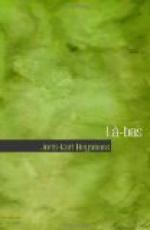“The master of contemporary science, Dumas, recognizes, under the name of isomery, the theories of the alchemists, and Berthelot declares, ’No one can affirm a priori that the fabrication of bodies reputed to be simple is impossible.’ Then there have been verified and certified achievements. Besides Nicolas Flamel, who really seems to have succeeded in the ‘great work,’ the chemist Van Helmont, in the eighteenth century, received from an unknown man a quarter of a grain of philosopher’s stone and with it transformed eight ounces of mercury into gold.
“At the same epoch, Helvetius, who combated the dogma of the spagyrics, received from another unknown a powder of projection with which he converted an ingot of lead into gold. Helvetius was not precisely a charlatan, neither was Spinoza, who verified the experiment, a credulous simpleton.
“And what is to be thought of that mysterious man Alexander Sethon who, under the name of the Cosmopolite, went all over Europe, operating before princes, in public, transforming all metals into gold? This alchemist, who seems to have had a sincere disdain for riches, as he never kept the gold which he created, but lived in poverty and prayer, was imprisoned by Christian II, Elector of Saxony, and endured martyrdom like a saint. He suffered himself to be beaten with rods and pierced with pointed stakes, and he refused to give up a secret which he claimed, like Nicolas Flamel, to have received from God.
“And to think that these researches are being carried on at the present time! Only, most of the hermetics now deny medical and divine virtues to the famous stone. They think simply that the grand magisterium is a ferment, which, thrown into metals in fusion, produces a molecular transformation similar to that which organic matter undergoes when fermented with the aid of a leaven.
“Des Hermies, who is well acquainted with the underworld of science, maintains that more than forty alchemic furnaces are now alight in France, and that in Hanover and Bavaria the adepts are more numerous yet.
“Have they rediscovered the incomparable secret of antiquity? In spite of certain affirmations, it is hardly probable. Nobody need manufacture artificially a metal whose origins are so unaccountable that a deposit is likely to be found anywhere. For instance, in a law suit which took place at Paris in the month of November, 1886, between M. Popp, constructor of pneumatic city clocks, and financiers who had been backing him, certain engineers and chemists of the School of Mines declared that gold could be extracted from common silex, so that the very walls sheltering us might be placers, and the mansards might be loaded with nuggets!
“At any rate,” he continued, smiling, “these sciences are not propitious.”
He was thinking of an old man who had installed an alchemic laboratory on the fifth floor of a house in the rue Saint Jacques. This man, named Auguste Redoutez, went every afternoon to the Bibliotheque Nationale and pored over the works of Nicolas Flamel. Morning and evening he pursued the quest of the “great work” in front of his furnace.




